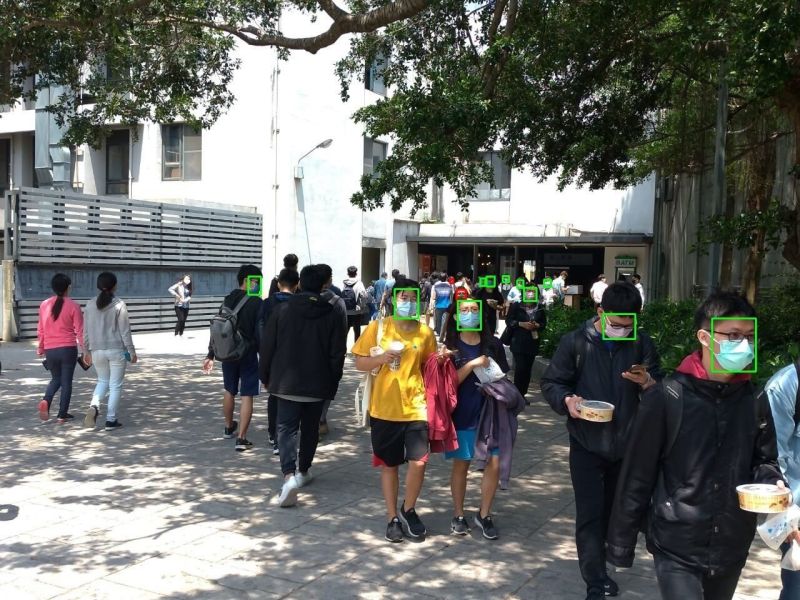媒體報導
2020-05-05 15:53:27Patty Chen``Mask face recognition system'' improves detection efficiency, NYCU leads the development in Taiwan

``Mask face recognition system'' improves detection efficiency, National Chiao Tung University leads the development in Taiwan
Checking whether people wear masks at MRT stations, campuses, commercial and office buildings and other places, it often requires more manpower to monitor. Professor Wen-Huang Cheng and Assistant Professor Hong-Han Shuai of the College of Electrical and Computer Engineering of National Chiao Tung University saw the need for epidemic prevention and jointly developed a "large-scale video surveillance mask face detection system" that can detect whether people wear masks with a camera in a crowded environment. The detection rate is as high as 95%, and the technology is leading in Taiwan.
Professor Wen-Huang Cheng said that the research team has had long-term investments in AI, machine learning and computer vision forward-looking research, and applied existing technology to a non-contact mask detection system. It took two weeks to successfully develop a system with a camera that can recognize whether people wear masks under the lens in real time.
The team initially selected the student dining halls and classrooms with high traffic to do experiments. When teachers and students walk into the imaging range of the camera, the system will immediately mark with a mask in a green frame, and a red frame to indicate who are not wearing a mask. The detection rate is as high as 95%. Even though it's a 90-degree side face, a phubber, or with relax lean/bend over the table, the system can detect them all.
Professor Wen-Huang Cheng said that the innovation of the mask face detection system is that its discrimination method focuses more on the key features of the facial features, such as the edge characteristics of the eyes. In this way, as long as the key parts of the face are scanned, it can be detected. Human faces can be detected regardless of size or posture, and then the condition of mask wearing can be recognized. Even for high-density traffic, large-scale video monitoring can be performed within 1/30 second.
Assistant Professor Hong-Han Shuai pointed out that in the past, face detection technology was mainly machine learning and analysis of a single portrait photo that was complete and large enough. If the face is too small, the angle is offset, or there are obstructions, it is easy to cause misjudgment. In such an environment, people must deliberately walk in front of the camera to make accurate measurements. "But this mask recognition system does not require humans to cooperate with machines." It will help implement the automation of epidemic prevention, no longer need to dispatch manpower to stick to the detection port, and greatly reduce manpower cost. People do not need to stop and cooperate with the measurement to improve detection efficiency.
Source:https://www.nctu.edu.tw/press/7351

